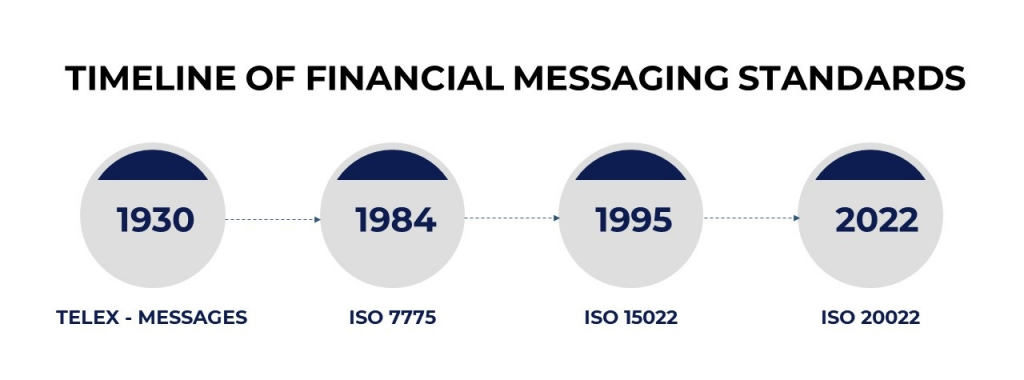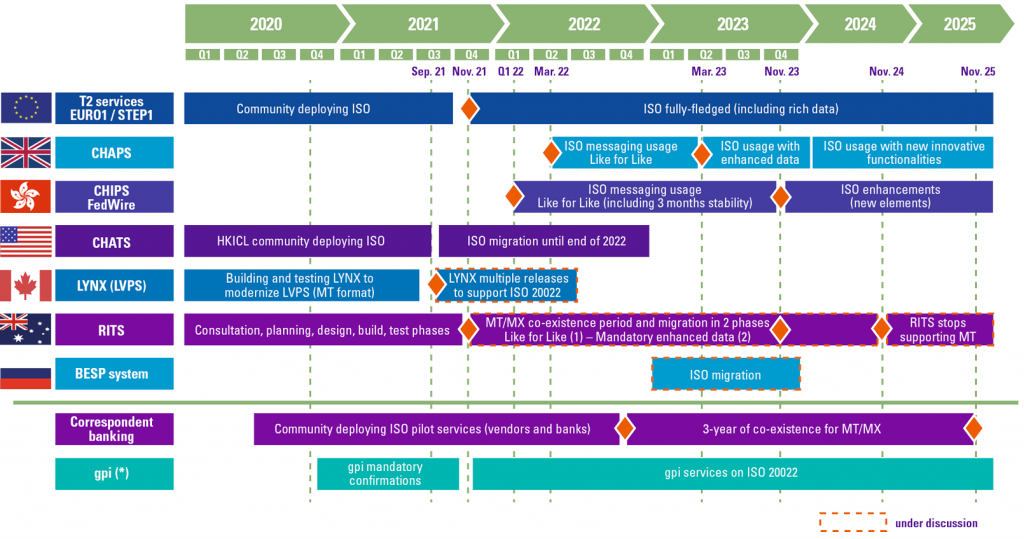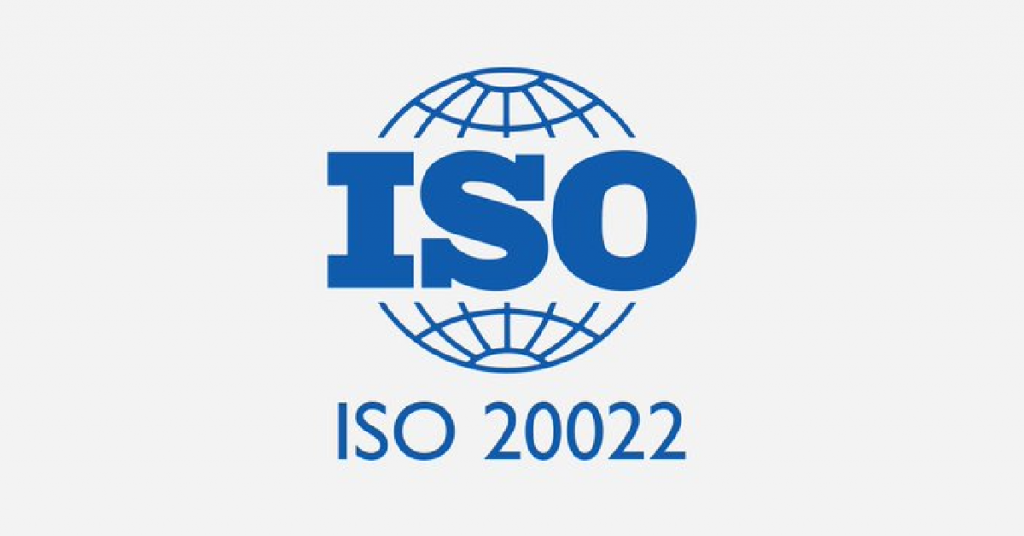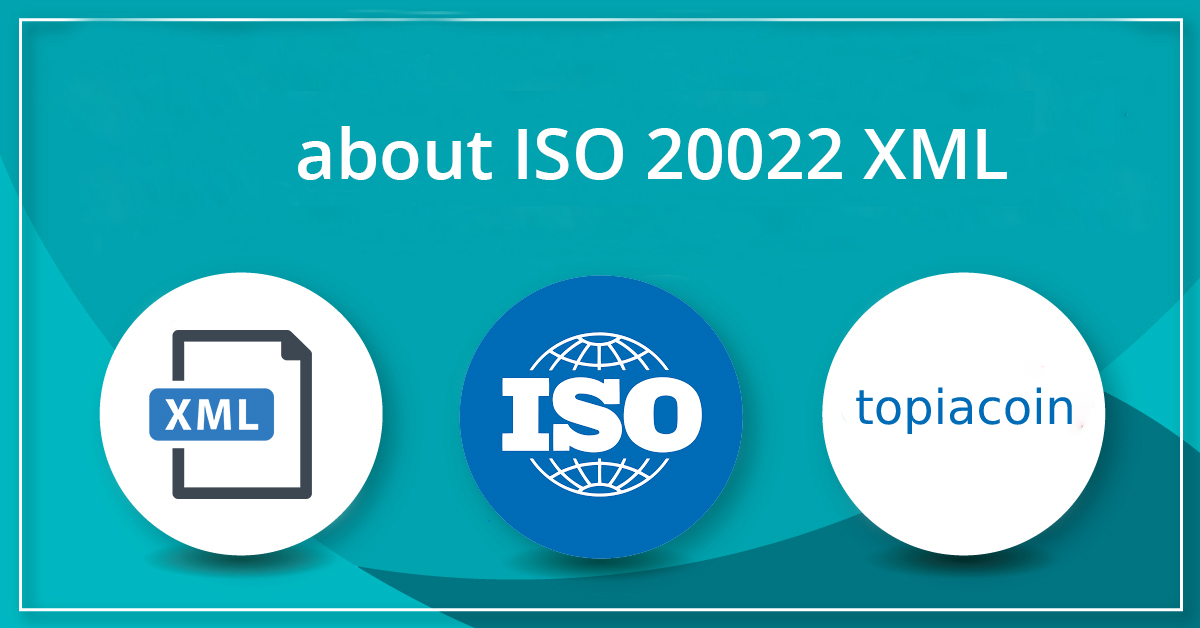The ISO 20022 is a multi-part International Standard that describes a platform used by banks to exchange banking data. It uses a set of XML design rules to convert messages into XML schemas whenever the ISO 20022 XML is in use. Banks can transfer data in ISO XML format, are account statements, payments and collections, and more. Iso20022 crypto you can get to know in our latest article, but now let’s talk about ISO 20022 XML.

This standardization approach allows users and message development organizations to define message sets. They do so according to an internationally agreed approach using agreed business semantics.
The ISO 20022 standard supports using richer and better-structured transaction data, especially in financial messages. It aims to deliver a better customer experience by improving fraud prevention measures, enabling higher resilience, and much more.
ISO 20022 covers 20 business areas with more than 400 messages. A four-letter area code usually identifies each room. For example:
- Payment Initiation – PAIN
- Account Management – ACMT
- Security Settlement – SESE and more
A big driver for adopting ISO 20022 is the Single European Payment Area (SEPA) that replaces payment processes in several countries.
What is XML?
Extensible Markup Language (XML) is a computer language for storing, transmitting, and reconstructing data. The metalanguage allows users to define their customized markup languages. This is true, especially regarding the display of documents online.
Like HTML, which tells an application how a document should look online, XML describes what’s in the paper. In other words, XML is usually concerned with information osm organized, not how it’s displayed.
There are many benefits of using XML. First, it allows businesses and corporations to transfer databases and websites without losing crucial information. Second, it will enable the customization of data presentation. Lastly, it makes searches more efficient as search engines can sort through the tags fast.
ISO 20022 XML Format Example
To conduct their business, payment processors and banks exchange massive amounts of information among themselves and with customers. These exchanges only work if the sender and receiver of the message understand how to interpret the data.

To eliminate the need for human interpretation, the financial industry created a system to organize data for more specific performance by computers. Here is an ISO 20022 XML format example that’s an excerpt from an ISO 20022 Customer Credit Transfer.
Let’s assume a bank in the Netherlands (Bank Identifier Code EXABNL2U) has a corporate customer ACME NV, Amsterdam. The customer wants to transfer $12,500 from their account, 8754219990.
Instead of the bank addressing the request above to its US Dollar correspondent in unstructured text, it sends a structured text. They do so based on the ISO 20022 XML format, as shown below.
The ISO 20022 XML format above provides clear definitions of the data formats, such as field lengths, character sets, and codes.
For example, the line: 12500shows the type of currency being transacted and the amount of the transaction. This is the underlying standard for a Customer Credit Transfer message. Not only does it start with the correct XML tag, but it also includes the ISO currency code and the actual amount.

What are The Benefits of ISO 20022 XML Format?
Since the adoption of the iso 20022 XML, the financial industry has been enjoying the benefits below:
Banks and other financial institutions adopted standardized return codes, dedicated returns, and much more. As such, the current delays in returning funds to customers and even responding to queries is drastically reduced.
The financial industry has enjoyed greater message harmonization across the banking and payment industry. This is thanks to using a universal message type for all payments. As such, it’s been easier to integrate more schemas faster.
ISO 20022 introduced dedicated reference fields. These fields remain unaltered during the transmission of payment data. It also introduced structured remittance data and fast customer reconciliation capabilities.
Lastly, ISO 20022 XML introduced rich structured data that provides excellent transparency. It also creates efficiencies by reducing delays associated with inconsistent, incomplete, and unstructured data.
Check our article about CBPR+ ISO 20022 for Dummies.




